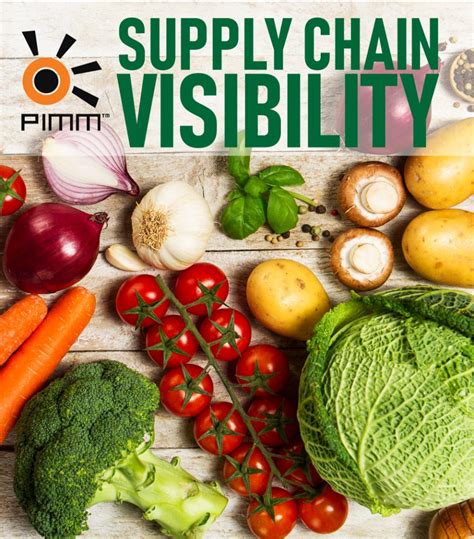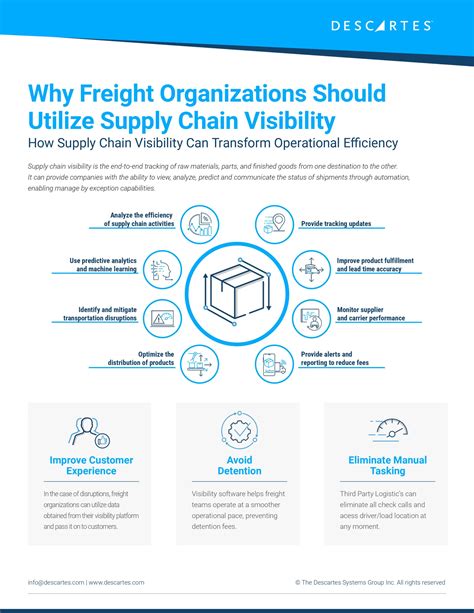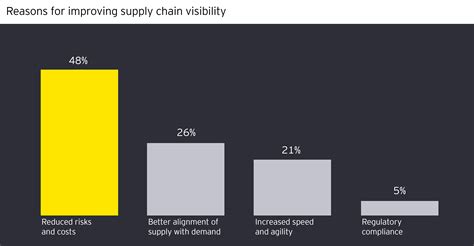The Importance of Supply Chain Visibility
Supply chain visibility refers to the ability to track, monitor, and manage the flow of goods, information, and finances throughout the entire supply chain, from raw materials to final products. By gaining a comprehensive, real-time view of their supply chain, organizations can:
- Identify potential bottlenecks and disruptions
- Optimize inventory levels and reduce waste
- Improve collaboration with suppliers and partners
- Enhance responsiveness to customer demands
- Mitigate risks and ensure compliance with regulations
In essence, supply chain visibility empowers companies to make informed decisions, adapt to changing market conditions, and maintain a competitive edge in their respective industries.
The Challenges of Component Sourcing
One of the most critical aspects of supply chain visibility is component sourcing. In today’s globalized economy, companies often rely on a complex network of suppliers, manufacturers, and distributors to procure the components necessary for their products. This presents several challenges, including:
-
Supplier selection and management: Identifying reliable, cost-effective suppliers that meet quality standards and delivery requirements can be a daunting task, particularly when dealing with a large number of potential partners across different geographies and cultures.
-
Risk assessment and mitigation: Supply chains are vulnerable to a wide range of risks, such as natural disasters, political instability, economic fluctuations, and cyber threats. Companies must be able to identify and assess these risks, and develop contingency plans to ensure continuity of supply.
-
Quality control and compliance: Ensuring that components meet the required specifications and comply with relevant regulations is essential to maintain product quality and avoid costly recalls or legal issues. This requires robust quality control processes and close collaboration with suppliers.
-
Cost management: Component sourcing can have a significant impact on a company’s bottom line, as raw materials and components often account for a large portion of the total cost of goods sold. Balancing cost considerations with quality, reliability, and sustainability is a constant challenge for procurement teams.
-
Demand forecasting and inventory management: Accurately predicting demand and maintaining optimal inventory levels is crucial to avoid stockouts or excess inventory, which can lead to lost sales or increased holding costs. This requires sophisticated forecasting methods and real-time visibility into inventory levels across the supply chain.
To address these challenges and achieve the benefits of supply chain visibility, companies must adopt a strategic, technology-driven approach to component sourcing.

Strategies for Effective Component Sourcing
-
Supplier Relationship Management (SRM): Building strong, collaborative relationships with key suppliers is essential to ensure a reliable, responsive supply chain. This involves:
-
Establishing clear communication channels and performance metrics
- Sharing information and best practices
- Jointly developing product specifications and quality standards
- Implementing continuous improvement initiatives
By investing in SRM, companies can foster trust, reduce risks, and drive innovation throughout their supply chain.
-
Strategic Sourcing: A strategic approach to component sourcing involves a thorough analysis of the supply market, taking into account factors such as:
-
Supplier capabilities and performance
- Total cost of ownership (TCO)
- Risk profile and mitigation strategies
- Sustainability and social responsibility
By carefully evaluating potential suppliers and developing a diversified, resilient supply base, companies can optimize their sourcing decisions and achieve long-term value.
-
Technology Adoption: Leveraging advanced technologies is crucial to achieve supply chain visibility and streamline component sourcing processes. Some key technologies include:
-
Enterprise Resource Planning (ERP) systems: Integrate and automate key business processes, including procurement, inventory management, and financial reporting.
- Supply Chain Management (SCM) software: Provide end-to-end visibility and control over the supply chain, enabling real-time monitoring, collaboration, and optimization.
- Internet of Things (IoT) sensors: Track and monitor the movement of goods throughout the supply chain, providing real-time data on location, condition, and performance.
- Artificial Intelligence (AI) and Machine Learning (ML): Analyze vast amounts of data to identify patterns, predict demand, and optimize sourcing decisions.
- Blockchain: Ensure transparency, traceability, and security of transactions and information flows throughout the supply chain.
By embracing these technologies, companies can gain a competitive advantage and unlock new opportunities for growth and innovation.
-
Collaboration and Information Sharing: Effective component sourcing relies on close collaboration and information sharing among all stakeholders in the supply chain. This includes:
-
Establishing a single source of truth for product and supplier data
- Implementing common standards and protocols for data exchange
- Sharing demand forecasts, inventory levels, and production schedules
- Collaborating on joint planning and problem-solving initiatives
By breaking down silos and fostering a culture of transparency and trust, companies can achieve greater agility, responsiveness, and resilience in their supply chain.

Best Practices for Supply Chain Visibility in Component Sourcing
-
Develop a comprehensive supplier database: Maintain a centralized, up-to-date database of all suppliers, including their capabilities, performance history, and risk profile. This will enable informed decision-making and facilitate collaboration across the organization.
-
Implement a robust supplier onboarding process: Establish clear criteria and procedures for selecting and onboarding new suppliers, including thorough due diligence, quality audits, and contractual agreements. This will help ensure that suppliers meet the required standards and align with the company’s strategic objectives.
-
Establish key performance indicators (KPIs): Define and track relevant KPIs for supplier performance, such as on-time delivery, quality, cost, and responsiveness. Use these metrics to monitor supplier performance, identify areas for improvement, and drive continuous improvement initiatives.
-
Conduct regular supplier audits and assessments: Perform periodic audits and assessments of suppliers to ensure compliance with quality, safety, and sustainability standards. This will help identify potential risks and opportunities for improvement, and foster a culture of accountability and excellence.
-
Implement a risk management framework: Develop a comprehensive risk management framework that includes risk identification, assessment, mitigation, and monitoring. This will enable proactive management of supply chain risks, such as supplier failures, natural disasters, or geopolitical events, and ensure business continuity.
-
Foster a culture of continuous improvement: Encourage a culture of continuous improvement and innovation throughout the supply chain, by sharing best practices, implementing lean principles, and investing in employee training and development. This will drive operational excellence and create a competitive advantage in the market.
-
Leverage advanced analytics: Use advanced analytics tools to gain insights into supply chain performance, identify trends and patterns, and optimize sourcing decisions. This may include predictive analytics for demand forecasting, prescriptive analytics for supplier selection, or machine learning for risk assessment.
-
Collaborate with industry partners: Engage in collaborative initiatives with industry partners, such as trade associations, standards organizations, or research institutions, to share knowledge, develop common standards, and drive innovation in supply chain visibility and component sourcing.

The Future of Supply Chain Visibility and Component Sourcing
As technology continues to evolve and global markets become increasingly complex and interconnected, supply chain visibility and component sourcing will remain critical priorities for organizations across industries. Some key trends and developments that will shape the future of this field include:
-
Increased adoption of digital technologies: The continued proliferation of digital technologies, such as IoT, AI, and blockchain, will enable greater transparency, traceability, and automation throughout the supply chain, driving efficiency and agility.
-
Growing focus on sustainability and social responsibility: As consumers and regulators increasingly demand sustainable and ethically sourced products, companies will need to prioritize sustainability and social responsibility in their component sourcing decisions, and work closely with suppliers to ensure compliance and drive positive impact.
-
Emergence of new business models: The rise of the sharing economy, circular economy, and servitization will create new opportunities and challenges for component sourcing, as companies shift from traditional ownership models to more flexible, service-based approaches.
-
Greater emphasis on risk management and resilience: In an increasingly volatile and uncertain global environment, companies will need to develop more sophisticated risk management strategies and build greater resilience into their supply chains, through diversification, redundancy, and contingency planning.
-
Increased collaboration and ecosystem thinking: The complexity and interdependence of modern supply chains will require greater collaboration and ecosystem thinking among all stakeholders, including suppliers, customers, competitors, and regulators, to drive innovation, efficiency, and sustainability.
By embracing these trends and adopting best practices in supply chain visibility and component sourcing, organizations can position themselves for success in the new age of global business.
Frequently Asked Questions (FAQ)
- What is supply chain visibility, and why is it important for component sourcing?
Supply chain visibility refers to the ability to track, monitor, and manage the flow of goods, information, and finances throughout the entire supply chain, from raw materials to final products. It is important for component sourcing because it enables companies to identify potential risks and opportunities, optimize inventory levels, improve collaboration with suppliers, and ensure compliance with quality and sustainability standards.
- What are some of the key challenges in component sourcing, and how can they be addressed?
Some of the key challenges in component sourcing include supplier selection and management, risk assessment and mitigation, quality control and compliance, cost management, and demand forecasting and inventory management. These challenges can be addressed through strategies such as supplier relationship management, strategic sourcing, technology adoption, and collaboration and information sharing.
- What are some of the advanced technologies that can enable supply chain visibility and streamline component sourcing processes?
Some of the advanced technologies that can enable supply chain visibility and streamline component sourcing processes include Enterprise Resource Planning (ERP) systems, Supply Chain Management (SCM) software, Internet of Things (IoT) sensors, Artificial Intelligence (AI) and Machine Learning (ML), and blockchain.
- What are some best practices for achieving supply chain visibility in component sourcing?
Some best practices for achieving supply chain visibility in component sourcing include developing a comprehensive supplier database, implementing a robust supplier onboarding process, establishing key performance indicators (KPIs), conducting regular supplier audits and assessments, implementing a risk management framework, fostering a culture of continuous improvement, leveraging advanced analytics, and collaborating with industry partners.
- What are some of the future trends and developments that will shape the field of supply chain visibility and component sourcing?
Some of the future trends and developments that will shape the field of supply chain visibility and component sourcing include increased adoption of digital technologies, growing focus on sustainability and social responsibility, emergence of new business models, greater emphasis on risk management and resilience, and increased collaboration and ecosystem thinking.
| Technology | Benefits for Supply Chain Visibility and Component Sourcing |
|---|---|
| ERP systems | Integrate and automate key business processes, including procurement, inventory management, and financial reporting |
| SCM software | Provide end-to-end visibility and control over the supply chain, enabling real-time monitoring, collaboration, and optimization |
| IoT sensors | Track and monitor the movement of goods throughout the supply chain, providing real-time data on location, condition, and performance |
| AI and ML | Analyze vast amounts of data to identify patterns, predict demand, and optimize sourcing decisions |
| Blockchain | Ensure transparency, traceability, and security of transactions and information flows throughout the supply chain |
In conclusion, supply chain visibility and effective component sourcing are essential for organizations to remain competitive and successful in the new age of global business. By adopting strategic approaches, leveraging advanced technologies, and implementing best practices, companies can optimize their supply chains, mitigate risks, and drive innovation and growth. As the business landscape continues to evolve, the ability to maintain a transparent, agile, and resilient supply chain will be a key differentiator and source of competitive advantage.

No responses yet